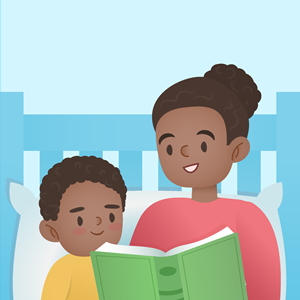Phonics Phase 1: Skill Development

Phonics Phase 1: Skill Development
No matter what reading method we use to teach children, they need to develop certain physical and sensory skills before they are ready to begin the formal learning process. While sensory skills include both visual perception and listening ability, a systematic synthetic phonics programme emphasises listening skills and auditory discrimination—the ability to distinguish between different sounds.
Physical Skills
Fine Motor Development: Young children need to develop the small muscles in their hands to hold and control a pencil and to turn the pages of books. Manipulating play dough or handling small objects are examples of activities which help fine motor development.
Motor Development: Children also need to have enough arm strength to control their hand as it moves a pencil, and to pick up and open picture books. Examples of activities that help with gross motor development are throwing balls and climbing on playground equipment.
Visual Skills
Young readers must recognise the differences between the shapes used to form various letters—for example, the difference between 'b', 'p', 'g', and 'q', which are formed by placing circles at different positions on straight lines. These skills develop as children learn to recognise similarities and differences between various shapes and patterns through puzzles and games which involve matching or finding the odd one out.
Listening skills
Before learning that a written symbol can be used to represent a sound, a child needs to be able to recognise the individual sounds of speech. This is why one of the main purposes of the first stage of a systematic synthetic phonics programme is to develop phonological awareness—the ability to recognise the rhythms and sounds of speech.
Sound discrimination
Languages are often compared to music. If you listen to two different foreign languages, such as Spanish and Mandarin Chinese, you will notice that language is like a song with its own tune or rhythm, its own lyrics or words, and its own notes, which are the vowels and consonants it uses. You will not be able to pick out individual lyrics until you become familiar with the rhythm you hear, and only then will you be able to pick out individual notes.
The first step in the process of developing phonological awareness is to improve children's general sound awareness and listening skills. You can begin by making them aware of the everyday sounds they hear around them such as animal sounds and machine noises. This is what we are doing when we ask a little one "What sound does a doggy make?" and they answer "Woof! Woof!", or when we hear something and ask the child "What do you hear?"
Then we help children learn to tell the difference between contrasting sounds. They can play games in which they identify loud and soft sounds, guess what a particular sound is, hear the different sounds made by different musical instruments, or choose the "odd sound out."
A Sense of Rhythm
Children become attuned to rhythm through simple musical activities. Instruments that develop a sense of rhythm include drums, shakers and tambourines. Physical activities include marching or clapping to a beat, moving to action rhymes and singing or chanting along to simple songs or nursery rhymes.
Fun with Rhyme
When children listen to nursery rhymes or other poetry, they learn to recognise both individual sounds and sound patterns.
Once they are able to clap to a beat they can begin to develop their awareness of the parts of words by clapping out syllables. As they listen to rhymes in songs and picture book stories, they will become familiar with pairs of words such as hill/bill or take/lake, which are similar in sound but differ in meaning due to slight sound differences.
Another fun aspect of poetry is alliteration, a pair or group of words which begin with the same sound. Familiar tongue twisters, such as 'She sells seashells by the seashore,' make heavy use of alliteration and bring the child's awareness to particular sounds—in this case, the 's' and 'sh' sounds.
Activities that build on awareness of rhyme include deciding whether or not two words rhyme, making up nonsense words that rhyme, finding a non-rhyming odd word out, and playing games such as rhyming bingo where they match a word to a rhyming partner. Games that develop awareness of initial sounds include matching objects with names that begin with the same sound, and playing I-Spy.
Pre-Phonics Activities
Children generally develop most of these skills naturally through their interactions with parents and caregivers both at home and in play-based nursery school programmes. Their reception year teacher will help them to continue developing these skills through age-appropriate play-based learning before introducing them to a formal reading programme.
Before starting a formal synthetic phonics programme, the teacher will show children how to break words into their individual sounds (segmenting) and how to combine individual sounds to form a word (blending).
Segmenting is taught by showing pupils an object, saying its name, and then asking what sounds they hear in the name of the object. Blending is taught by showing an object, saying the sounds in its name, and then asking pupils what the object is.
Learning to read needs to be based on a solid foundation of general language skills. These develop when a child has plenty of opportunities for speaking and for hearing stories, songs and rhymes. It is also important for children to have fun so that they will develop a positive attitude towards learning.
Continue reading: Phonics Phase 2: Introducing the First Letters

